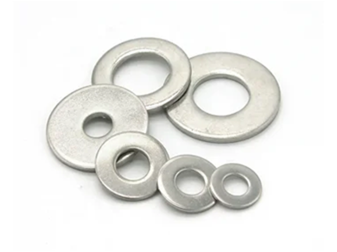Nov . 19, 2024 12:46 Back to list
Guide to Choosing the Right Washer Sizes for Various Bolt Types
Understanding Washer Sizes for Bolts A Comprehensive Guide
When it comes to mechanical assembly, the importance of choosing the correct washer for bolts cannot be overstated. Washers play a crucial role in load distribution, vibration dampening, and providing a smooth surface for fasteners. This article will delve into the various sizes of washers suitable for different bolts, helping you make the right choices for your projects.
What are Washers?
Washers are flat, circular objects made of various materials like metal, plastic, or rubber. Their primary function is to distribute the load of a threaded fastener, typically a bolt or screw. By spreading the load over a larger surface area, washers help prevent damage to the connected materials. They also help prevent loosening due to vibration and can serve as spacers to ensure the proper distance between components.
Types of Washers
There are several types of washers, each designed for specific applications
1. Flat Washers The most common type, used to distribute loads and reduce friction. 2. Lock Washers Designed to prevent fasteners from loosening under vibration and torque. 3. Fender Washers Have a larger outer diameter, providing more surface area and load distribution. 4. Spring Washers Used to absorb shocks and vibrations. 5. Sealing Washers Made from rubber or other materials to provide a watertight seal.
Selecting the Right Washer Size
When it comes to selecting the correct washer size for bolts, a few key dimensions must be considered
1. Inner Diameter (ID) This is the hole of the washer, and it must match the diameter of the bolt. If the ID is too small, the washer cannot fit over the bolt, and if it's too large, it may not properly distribute the load.
2. Outer Diameter (OD) The diameter of the washer's surface. A larger OD can distribute the load more effectively, which is especially important in softer materials like wood or plastic.
washer sizes for bolts

3. Thickness The thickness of the washer influences its strength and the load it can support. Thicker washers can bear more weight but may require more space.
4. Material Select a washer material compatible with the bolt and the environment. For example, stainless steel washers resist rust and corrosion, making them suitable for outdoor applications. In contrast, plastic washers may be used where electrical insulation is needed.
Common Washer Sizes
Washers come in various sizes and standards. For instance, in the United States, washer sizes are often specified by their ID and OD dimensions, typically in inches
- ANSI B18.22.1 This standard covers flat washers, detailing sizes ranging from 1/4 inch to 3 inches in ID, with corresponding OD measurements. - Metric Washers Common metric sizes include M3, M4, M5, and up, with specific ID and OD measurements defined in millimeters.
When selecting a washer, it’s essential to refer to a washer size chart that matches the standard you are using, whether it be Imperial or Metric.
Additional Considerations
When using washers in assembly, it is critical to consider the environment. Factors such as exposure to chemicals, temperature variations, and moisture can all affect the lifespan and performance of a washer.
In high-vibration applications, using lock washers or spring washers may be beneficial for additional security against loosening. In contrast, in applications requiring water resistance, rubber or neoprene sealing washers might be appropriate.
Conclusion
Understanding washer sizes for bolts is crucial for ensuring a robust and reliable assembly. By considering the dimensions, material, and type of washer required for a specific application, you can enhance the longevity and performance of your projects. Whether you are a professional contractor or a DIY enthusiast, paying attention to the details of washer selection will lead to better outcomes and fewer maintenance issues in the long run. Always refer to trusted size charts and standards to ensure you choose the correct washer for your needs.


